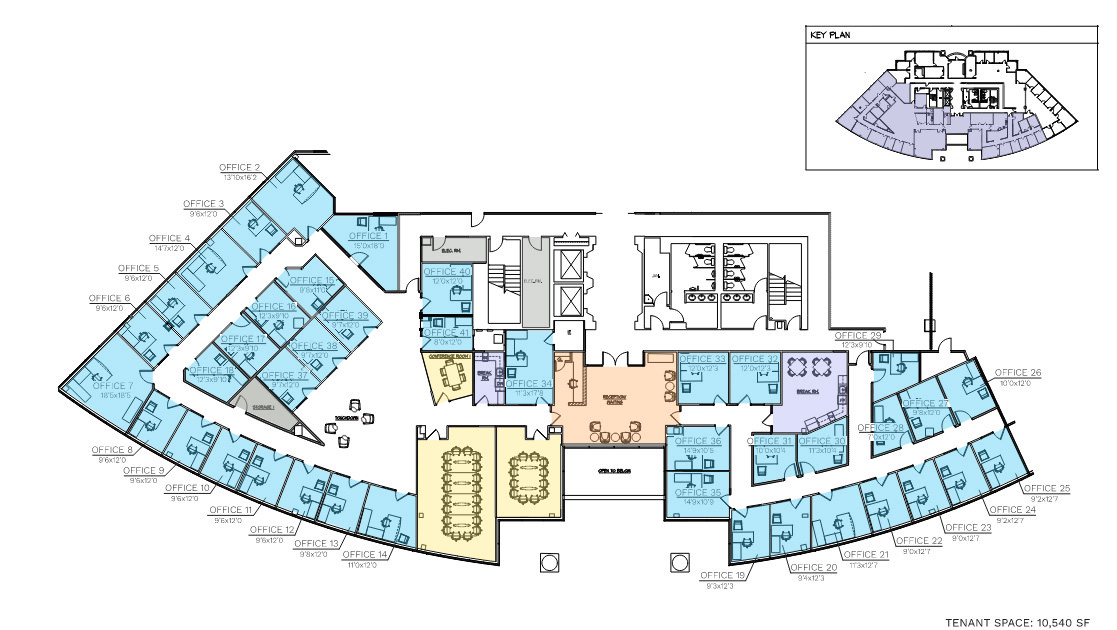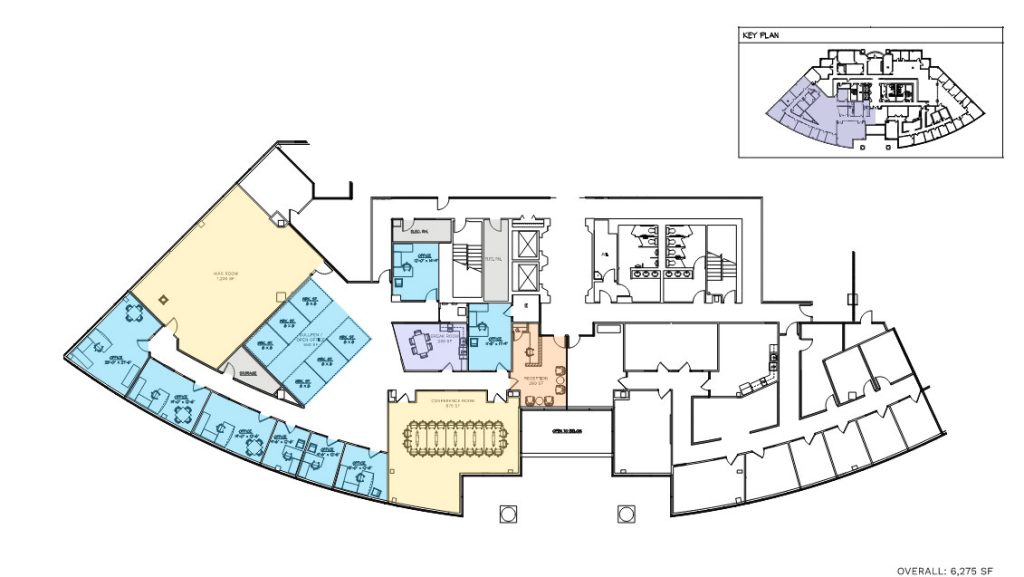
For retail or office building owners, reaching 100% occupancy is the ultimate goal, but navigating tenant management can be complicated. The process, which we like to call tenant Tetris, entails carefully fitting numerous leaseholders into a building, meeting their diverse needs while boosting overall tenancy.
The Challenge of Tenant Tetris
Like Tetris, where assorted shapes must fit perfectly to complete a row, our designers and architects work together to methodically arrange spaces to accommodate varying programs. For example, a rapidly expanding company might have to double its office size, whereas another transitioning to a hybrid work model could reduce its footprint. Our team anticipates these shifts, offering multiple iterations of test fits to demonstrate how different configurations can work. This flexibility allows us to address the requirements of each tenant and maximizes building capacity.
Strategic Relocation
Another solution is the deliberate relocation of occupants within a building. This often happens to allow for new leaseholders or improve the use of space. For instance, if an extra office becomes available, an existing tenant might be moved there, freeing up room to attract a new high-profile one. This tactical reshuffling benefits everyone; current tenants gain upgraded units and building owners can accommodate new ones without sacrificing occupancy rates.

Lease Renewals as Opportunities
Lease renewals offer an additional instance to play tenant Tetris. As leases come up for renewal, we reevaluate occupants’ needs and explore ways to optimize their placement within the building. This might involve offering a new layout in their current space or relocating them to an alternative area that better suits them. Proactively managing lease renewals in this manner bolsters satisfaction and maintains retention.
Our Role in Tenant Tetris
Architects and designers play a crucial role in the design process when it comes to tenant management. With a deep understanding of spatial design and functionality, we visualize multiple configurations to create efficient, aesthetically pleasing layouts, finding the appropriate fit for each tenant while maximizing overall space utilization.
Conclusion
Tenant Tetris is a complex, ongoing process that requires expertise, flexibility, and strategic planning. By effectively managing their properties, building owners can achieve the elusive goal of 100% occupancy and provide tenants with spaces that support their business operations and growth.
